October 7, 2025
Traditional stormwater management systems were designed for traditional weather patterns. These efficient systems would typically collect rainwater through storm drains, funnel it through pipes, and discharge it as quickly as possible into the nearest body of water. But this effectiveness depended on rainfall following historic averages and that heavy storms would be something a community might face every decade or so.
As recent years have proven, weather today is anything but predictable.
Communities are now experiencing intense downpours more often. Streets flood more often; storm drains overflow; and the infrastructure that was once enough is struggling to keep up.
The question isn’t just how to respond to these changes, but how to intelligently and sustainably prepare for them.
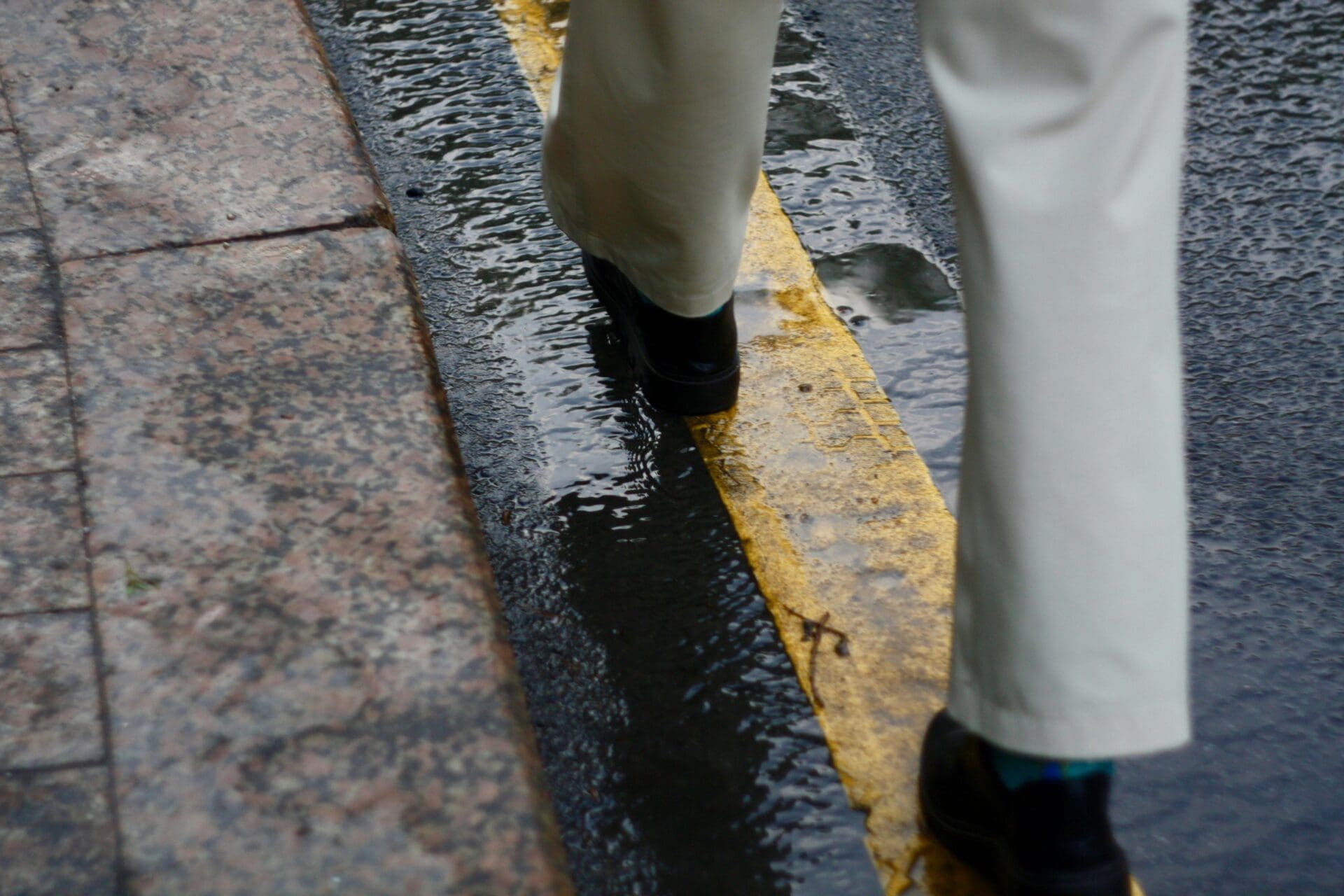
When rain hits an impervious road surface, such as asphalt or concrete, it cannot flow through it—it must go somewhere. The journey stormwater takes after it falls may seem invisible, but it has real consequences.
More Water, More Problems
Historically, terms like “10-year storm” or “100-year storm” are used to describe rainfall events based on their probability. For example:
- A 10-year storm has a 10% chance of occurring in any given year.
- A 100-year storm has a 1% chance of occurring in any given year. (Think of 2017’s Hurricane Harvey, where it rained over 50 inches in Texas).
What we’re seeing, however, is that these odds are shifting. Across the country, communities are seeing 25-, 50-, or even 100-year-storm levels of rainfall much more frequently than expected. Princeton researchers developed new maps that predict coastal flooding and found 100-year floods could become annual occurrences in New England; and happen every one to 30 years along the southeast Atlantic and Gulf of Mexico shorelines. But it’s not just about frequency, it’s also about intensity. A study from the University of Michigan found that the amount of precipitation from the heaviest 1% of storms grew by 60% between 1958 and 2021.
As a result, infrastructure designed for the “norm” is constantly playing catch-up with a new reality.
Why It Matters Where the Water Goes
When rain hits an impervious road surface, such as asphalt or concrete, it cannot flow through it—it must go somewhere. The journey stormwater takes after it falls may seem invisible, but it has real consequences.
When that water has nowhere to go, it can flood homes and businesses and rush into streams and rivers, causing extensive damage to the ecosystem. Runoff clouds the water with sediment and pollution, which harms fish by choking out oxygen, burying eggs, and disrupting their habitat. Chemicals from lawns and streets that mix into the runoff can also be toxic to aquatic life.
The health of fish populations is often a direct reflection of water quality. If stormwater is degrading that quality, it’s a problem for wildlife—and a problem for anyone who depends on clean water for drinking, recreation, or fishing.
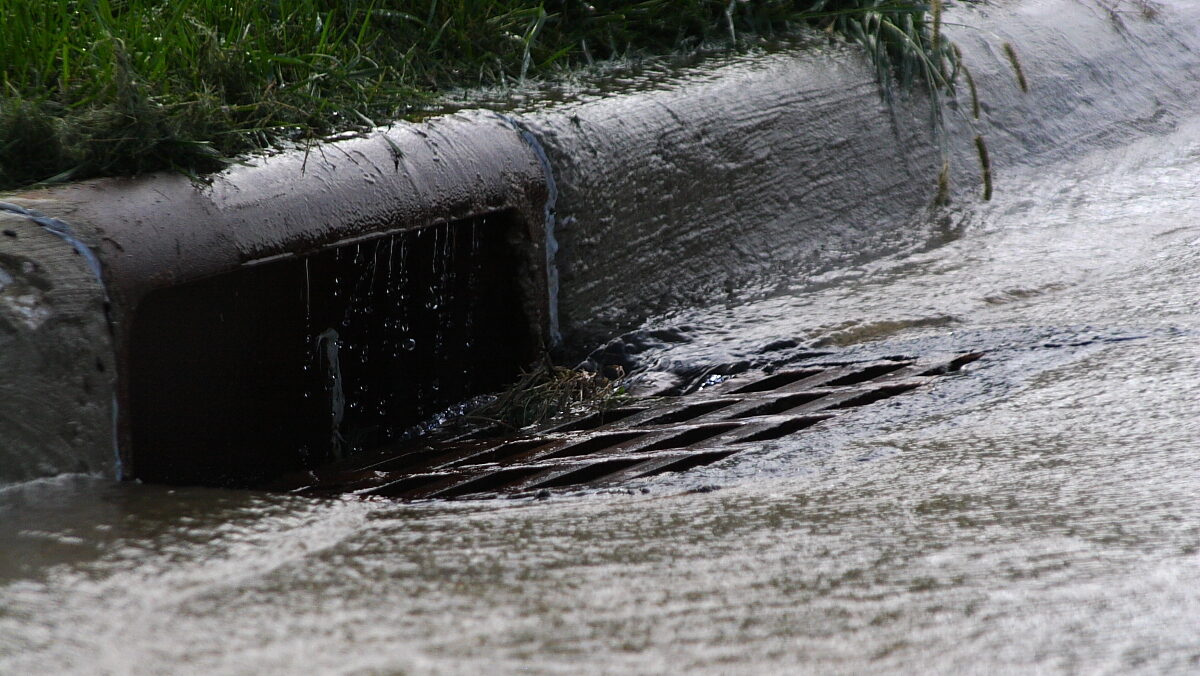
Traditional stormwater management techniques, or “gray infrastructure,” were designed to move water off the landscape quickly. Gutters, storm drains, and underground pipes work together to collect rainwater and carry it away.
The Current State of Traditional Stormwater Management
Traditional stormwater management techniques, or “gray infrastructure,” were designed to move water off the landscape quickly. Gutters, storm drains, and underground pipes work together to collect rainwater and carry it away. This method reduces immediate flooding but creates a range of unintended consequences:
- Lack of filter. Rainfall that hits hard surfaces like roads and parking lots picks up oil, trash, fertilizers, and other pollutants. These contaminants are then flushed straight into waterways, where they can harm aquatic life and degrade water quality.
- Erosion. Fast-moving runoff erodes streambanks and increases sedimentation in rivers, which can disturb the natural balance of ecosystems.
- Flooding potential. When these gray infrastructure systems are overwhelmed—which is happening more frequently—it can result in flooding that damages homes, roads, and public spaces. Gray infrastructure also moves water faster than natural streams and channels, which increases the flow into these bodies of water and causes them to flood more frequently.
Modern stormwater management, often called “green infrastructure,” takes a different approach. Instead of quickly removing water, it emulates nature’s tried-and-true strategy for dealing with stormwater: it slows it down, spreads it out, and soaks it in.
Stormwater Management that Works with Nature
Green infrastructure is a modern approach that manages water at the surface and treats it as a resource, not a waste product to be rapidly moved away. This strategy is increasingly being used alongside, or sometime in place of, traditional gray infrastructure.
Green infrastructure has four key strategies for metabolizing runoff:
- Slow it down. The faster runoff moves, the more damage it can cause. New designs focus on reducing the velocity of traveling water in order to prevent erosion, flooding, and downstream surges.
- Spread it out. Distributing runoff across multiple features, like swales, tree wells, or permeable surfaces, reduces the pressure on any single part of the system.
- Soak it in. Promoting infiltration allows water to recharge groundwater (water that fills the tiny spaces between soil particles, gravel, sand, and rock) and reduces runoff volume.
- Clean it naturally. Plants, soils, and microbes in green infrastructure systems help filter pollutants like oil, heavy metals, and excess nutrients before they reach aquatic habitats.
What Green Infrastructure Looks Like
As communities look ahead and prepare for the next big storm, many are looking to be proactive with green infrastructure systems.
Permeable Pavement
Unlike traditional asphalt or concrete, permeable pavers or porous asphalt allow rainwater to flow through the surface and into a gravel base below. This reduces runoff, helps with infiltration, and cools surface temperatures.
Bioswales
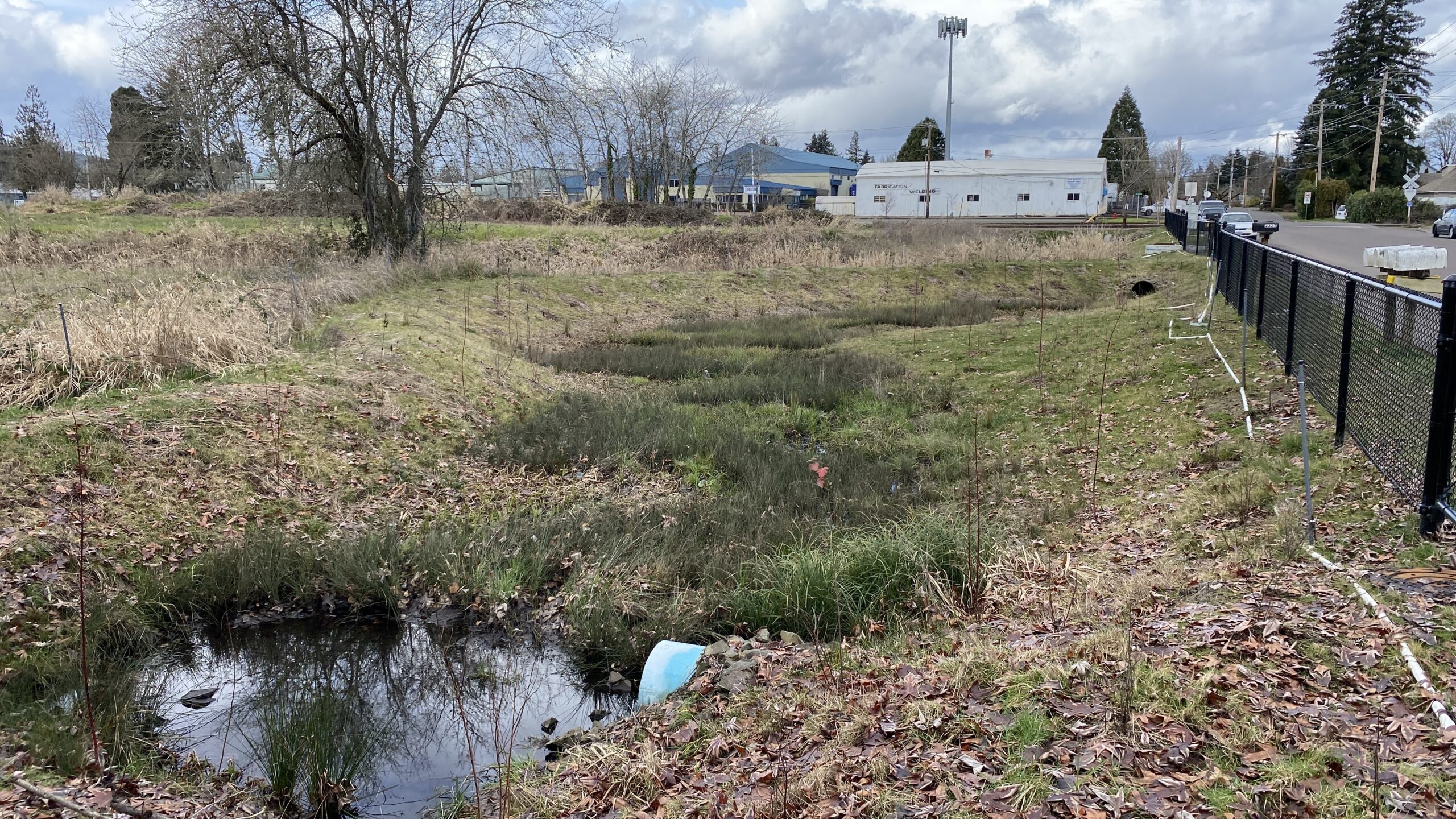
Bioswales are vegetated channels that move water while filtering it through layers of soil and plant roots.
Designed to slow and treat stormwater, they’re common along roadsides, parking lots, and commercial areas.
Photo source: Kittelson & Associates, Inc.
Constructed Wetlands
These mimic the function of natural wetlands, treating stormwater while providing habitat and buffering floodwaters. They’re effective for larger-scale areas such as parks, campuses, or industrial zones.
Retention Basins
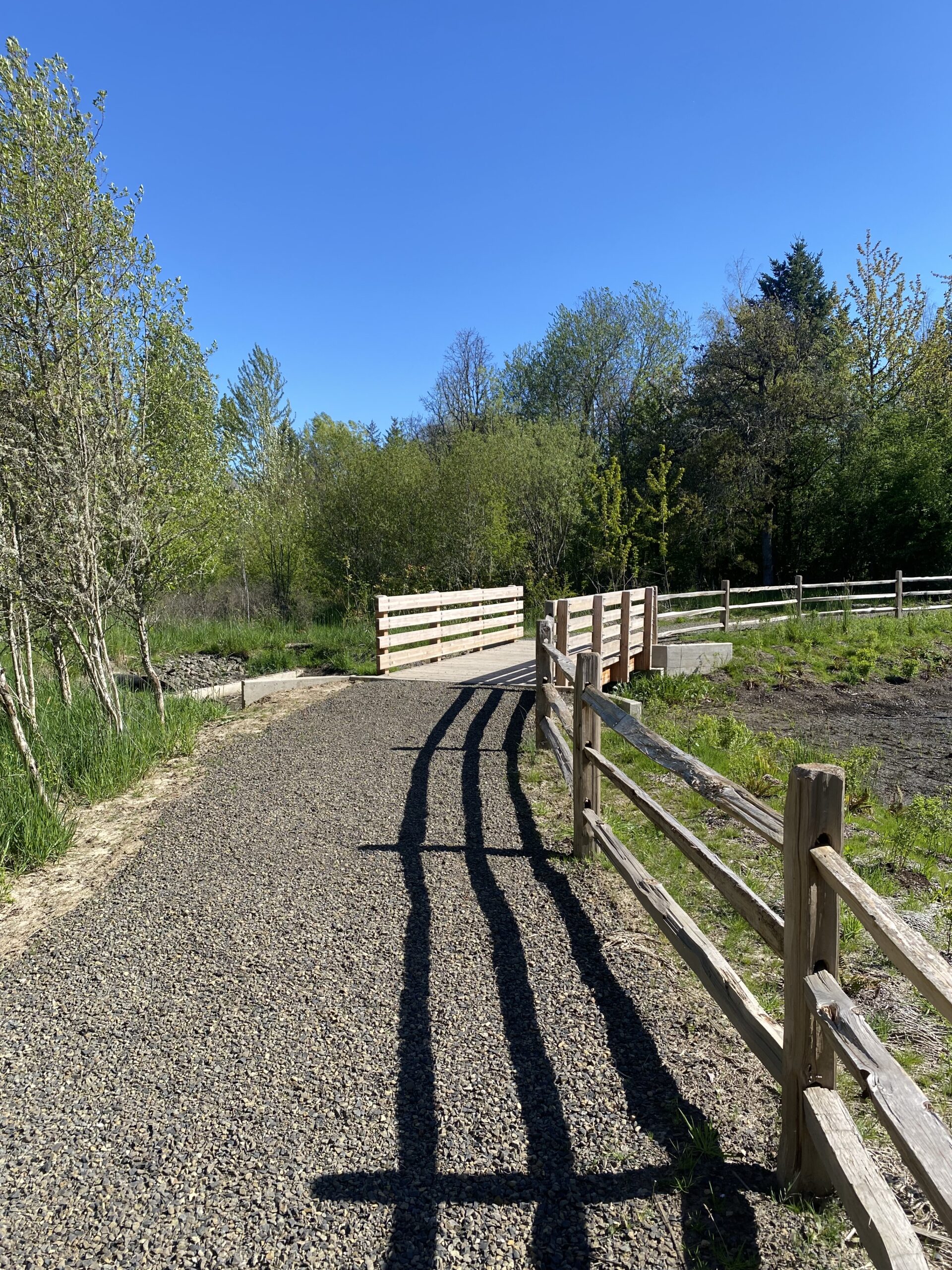
These are permanent ponds designed to hold water at all times. When a storm hits, additional water flows in, gradually mixing and settling out pollutants before the cleaner water is slowly released. These basins also support aquatic vegetation and wildlife and can become attractive features in parks and neighborhoods when well-maintained.
We recently partnered with the City of Forest Grove, Oregon, to improve the infrastructure along 26th Avenue, a narrow rural road in a recently annexed community in Washington County. In an overall effort to improve the Forest Grove Community, the project also involved redeveloping Stites Park and its stormwater management system by constructing a retention basin. By installing this facility, we were able to protect the local watershed, improve water quality, and manage runoff volume to decrease flooding.
Photo source: Kittelson & Associates, Inc.
Detention Ponds
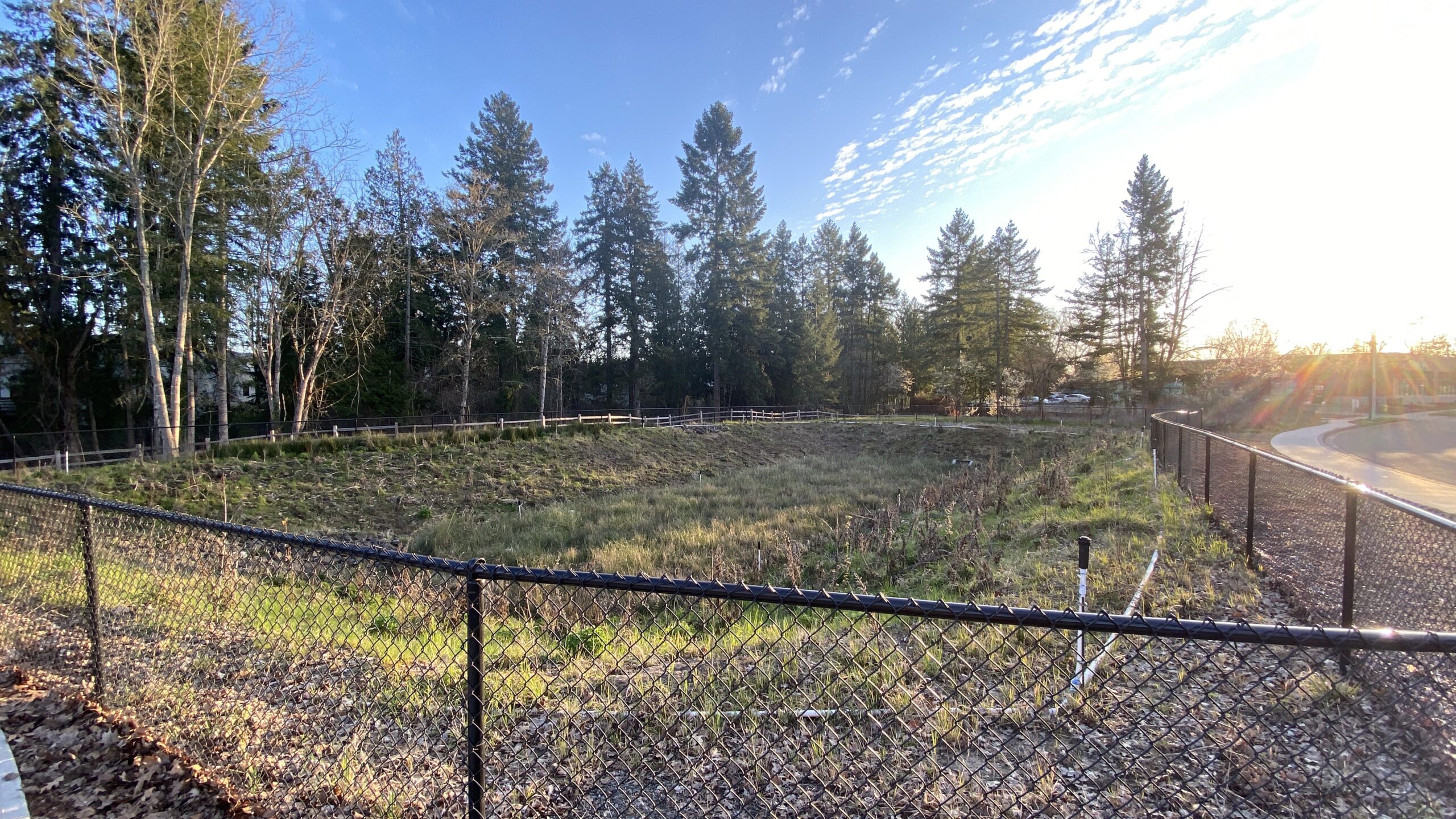
Also called “dry ponds”, these are designed to temporarily store stormwater during and after a rainfall event. Once the storm passes, the water slowly drains out over hours or days.
When the Hillsboro Transportation Systems Plan identified NE Cherry Drive as an important missing link in its roadway, pedestrian, and bicycle connectivity, we stepped in to collaborate on their final design roadway improvements, which included a detention basin facility. The detention pond installed offered dual benefits: reducing water flow downstream and removing pollutants.
Photo source: Kittelson & Associates, Inc.
Time to Build for the Weather of Today and Tomorrow
Storms continue to increase in frequency and intensity, and traditional infrastructure only struggles to safely and efficiently handle the runoff.
However, taking a smarter and slightly more green approach to water management can help communities reduce flooding, protect ecosystems, and prepare for whatever comes next on the radar.
